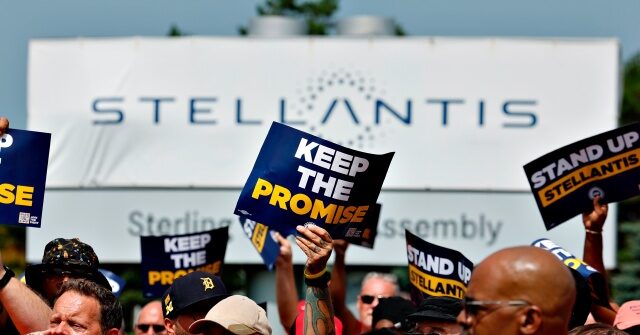Stellantis, a major player in the automotive industry, has made significant operational cuts, including the closure of its largest vehicle testing facility in Yucca, Arizona. This decision follows recent layoffs affecting over 1,000 auto workers at the Warren, Michigan plant and approximately 200 workers at the Sterling Heights plant. The Arizona Proving Grounds, covering a substantial 4,000 acres between Phoenix and Las Vegas, has been integral to the company’s vehicle testing and development since Chrysler acquired the site from Ford for $35 million in 2007. Although the facility employed a modest number of workers—69 as of mid-2019—its closure highlights the broader trend of workforce reductions within the company.
CEO Carlos Tavares’s substantial salary increase of 56 percent to nearly $40 million in 2023 stands in stark contrast to the extensive layoffs affecting Stellantis’s workforce. Such increases in executive compensation amid massive workforce cuts have drawn criticism, particularly from labor advocates and affected workers. This pattern is echoed in Stellantis’s outsourcing strategies, which involve relocating engineering jobs to lower-wage countries like Brazil, India, Mexico, and Morocco. This move has further aggravated labor relations, as around 400 American engineers faced layoffs around the same time.
In the context of its changing workforce, Stellantis’s employment figures in the U.S. considerably lag behind those of other major automakers. By the end of the previous year, Stellantis boasted only 11,000 salaried employees in the U.S., compared to General Motors, which had 53,000, and Ford with 28,000. This disparity raises questions about Stellantis’s future competitiveness and operational strategy as it scales back domestic employment while shifting workloads overseas.
Despite previously securing a commitment from Stellantis to reopen the halted Belvidere Assembly Plant in Illinois, the automaker has yet to fulfill this promise. In light of the ongoing layoffs and the closure of the Yucca testing facility, local officials and labor representatives have publicly urged the company to honor its commitments to American workers. Illinois Treasurer Michael Frerichs has been vocal in demanding that CEO Tavares “Keep The Promise” regarding the reopening of Belvidere, expressing frustrations over the company’s lack of action on this front.
The broader implications of these cuts and strategic decisions reflect not only Stellantis’s immediate operational goals but also its long-term vision for cost management and workforce efficiency. The trend toward outsourcing and the significant reduction in the American workforce raise concerns regarding the sustainability of domestic manufacturing jobs in the automotive sector. As companies like Stellantis prioritize profitability and cost-cutting measures, workers and community stakeholders are left grappling with the impact on employment stability and economic vitality in their regions.
In conclusion, Stellantis faces a critical juncture as it navigates its restructuring efforts, the fallout from recent layoffs, and the sought-after commitment to local communities. While executive salaries have burgeoned amid austerity measures, the ongoing dialogue between automakers and labor unions will be pivotal in shaping the future landscape of the automotive industry. As stakeholders continue to hold the company accountable for its promises, the challenge remains for Stellantis to reconcile its operational needs with the expectations of its workforce and the communities it impacts.

